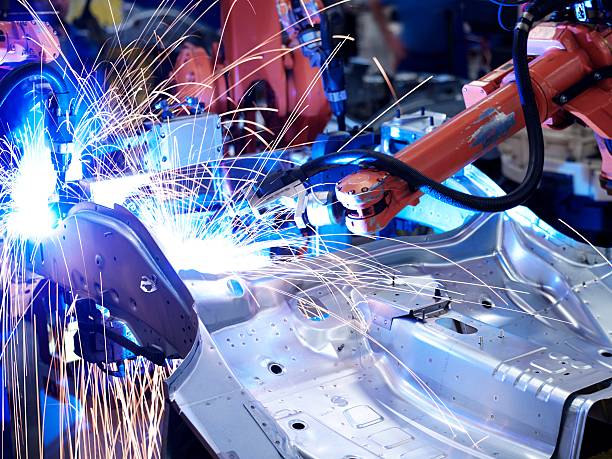A new heat engine that has no moving parts is as efficient as a steam turbine
Engineers at MIT and NREL have created a heat engine that has no moving parts. The engine converts heat into electricity at over 40% efficiency, which is a higher performance than traditional steam turbines.
The heat engine, a thermophotovoltaic cell (TPV), is similar to a solar panel’s photovoltaic cells. It passively captures high energy photons from a white hot heat source and converts them to electricity. The design of the team can produce electricity from heat sources between 1,900 and 2,400 degrees Celsius or up to 4,300 degrees Fahrenheit.
According to researchers, the TPV cell would be used in a grid-scale thermo battery. The system would absorb excess energy from renewable sources like the sun and store it in highly insulated graphite banks. TPV cells convert heat into electricity, and then send it to the grid when energy is required, like on cloudy days.
The team now has the ability to demonstrate the main components of the system using the new TPV cells in small-scale experiments. They are currently integrating the components to show a fully functional system. They hope to expand the system in order to replace fossil fuel-driven power plants with a fully decarbonized grid that is entirely powered by renewable energy.
“Thermophotovoltaic cell was the last step towards demonstrating that thermal battery are a viable idea,” said Asegun Henry (the Robert N. Noyce Career Developer Professor in MIT’s Department of Mechanical Engineering). This is a crucial step in the journey to increase renewable energy and a fully decarbonized grid.
Henry and his collaborators published their results in Nature on April 13, 2022. Alina LaPotin and Kyle Buznitsky are co-authors at MIT. Colin Kelsall and Andrew Rohskopf are also co-authors. Evelyn Wang is the Ford Professor of Engineering and head of Department of Mechanical Engineering. Kevin Schulte and his collaborators at NREL, Golden, Colorado, are also co-authors.
Jumping the Gap
Over 90% of the world’s electricity is generated from heat sources like coal, natural gas and nuclear energy. Since over 100 years, steam turbines have been the industry standard in converting heat into electricity.
Steam turbines can convert approximately 35 percent of heat into electricity. The highest efficiency heat engine has ever seen is 60 percent. The machinery is dependent on temperature-limiting moving parts. Turbines would not be able to withstand heat sources above 2,000° Celsius (3,600° Fahrenheit) such as Henry’s thermal battery system.
Scientists have been looking into solid-state options — heat engines that don’t move parts and could work at higher temperatures in recent years.
Henry says that solid-state energy convertors have the advantage of operating at higher temperatures and lower maintenance costs. They don’t need moving parts. They just sit there and generate reliable electricity.
One exploratory route to solid-state heat engine development was through thermophotovoltaic cell. TPV cells can be made from semiconducting material with a specific bandgap, which is the gap between a material’s valence and conduction bands. This could be similar to solar cells. A photon with enough energy can be absorbed by the material and can trigger an electron to conduct. This can generate electricity without the need for moving rotors.
TPV cells are rated at around 20% efficiency, with the highest at 32%. This is because they use low-bandgap materials, which convert lower-temperature and low-energy photons to energy, so they do not convert as efficiently.
Lightening the load
Henry and his coworkers designed a new TPV to capture higher-energy photons coming from a higher temperature heat source. This would allow them to convert energy more efficiently. The new cell uses higher-bandgap materials, multiple junctions or material layers than existing TPV designs.
The cell is made from three main areas: the high-bandgap alloy, which sits above a slightly lower bandgap, and underneath which is a mirror-like gold layer. The first layer captures the highest-energy photons from a heat source and converts them to electricity. Lower-energy photons passing through the first layer are captured and converted to voltage. Any photons passing through the second layer are reflected back by the mirror and returned to the heat source.
The team placed the cell over a heat flux sensor to test its efficiency. This device measures heat absorbed by the cell. The team exposed the cell to high-temperature lamps and focused the light onto it. The bulb’s intensity was adjusted and the power efficiency, which is the difference between the power produced by the cell and the heat it absorbs, was monitored. The efficiency of the new TPV cells was around 40% across temperatures ranging from 1,900 to 2,400 degrees Celsius.
